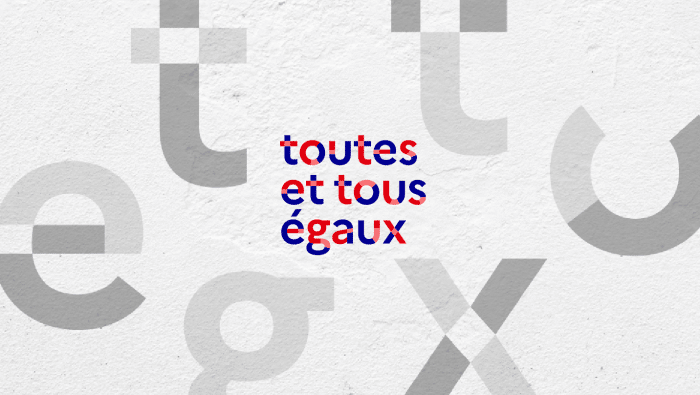Fermeture pendant les vacances de Noël
Social et accompagnementFermeture des lieux de restauration : Du 21 décembre 2024 au 5 janvier 2025, tous les lieux de restaurantion sont fermés. Fermeture des services centraux : Du 25 décembre [...]

Écoute, conseil, aides aux démarches administratives, soutien financier, accès aux démarches de soin…
Les services du Crous de Nantes Pays de la Loire et des Universités ont pour mission de favoriser l’amélioration des conditions de vie et de travail des étudiants.

Les assistant(e)s de service social du Crous de Nantes Pays de la Loire sont à votre disposition à Nantes, Angers, Saint-Nazaire, Le Mans, Laval et la Roche sur Yon.
Tenu(e)s au secret professionnel, les assistant(e)s de service social vous propose un espace confidentiel de parole et d’écoute à la recherche de solutions.

Envie de parler, de vous confier ? N’hésitez pas à contacter la cellule d’écoute psychologique ou la cellule d’écoute Nightline pour un soutien psychologique avec des étudiants bénévoles ou des professionnels, gratuitement.

Le Crous de Nantes Pays de la Loire met en place différents dispositifs de soutien et d’écoute pour vous accompagner lorsque vous rencontrez des difficultés.

Le Crous de Nantes Pays de la Loire vous accompagne dans votre quotidien. Du tarif social en restauration universitaire aux aides financières diverses, en passant par l’aide à la complémentaire santé, nous mettons tout en œuvre pour vous faciliter la vie le temps de vos études supérieures.

 Social et accompagnement
Social et accompagnement
Fermeture des lieux de restauration : Du 21 décembre 2024 au 5 janvier 2025, tous les lieux de restaurantion sont fermés. Fermeture des services centraux : Du 25 décembre [...]
 Le Crous
Le Crous
À l’occasion de la journée internationale de lutte contre les violences faites aux femmes le 25 novembre, les Crous réaffirment leur mobilisation contre les violences sexistes et sexuelles. “Les Crous [...]
 Le Crous
Le Crous
La CVEC permet de financer de nombreux projets pour la qualité de vie étudiante, sur les thématiques de l'environnement, du sport, de la santé et de la culture. A l’occasion [...]
 Social et accompagnement
Social et accompagnement
Proposé par l’Assurance Maladie à l’intention des étudiants, le bus national Mes Tips Santé fera escale le mardi 24 septembre à la Roche sur Yon et le mardi 8 octobre [...]
 Social et accompagnement
Social et accompagnement
Bénédicte Durand, présidente du Centre national des œuvres universitaires et scolaires (Cnous), vient de valider la fin officielle de la campagne 2023-2024 de la CVEC (Contribution de Vie Etudiante et [...]
 Social et accompagnement
Social et accompagnement
Les Crous proposent tout au long de l’année des dispositifs d’écoute et d’aides psychologiques pour les étudiants. Selon l’enquête « Prisme »¹, 43% des étudiants se disent concernés par un [...]
 Le Crous
Le Crous
Suite au violent séisme qui a endeuillé le Maroc vendredi dernier, les Crous expriment leur solidarité au peuple marocain et présentent leurs condoléances aux familles des victimes. Nous avons une [...]
Crous Nantes Pays de la Loire
We firmly believe that the internet should be available and accessible to anyone, and are committed to providing a website that is accessible to the widest possible audience, regardless of circumstance and ability.
To fulfill this, we aim to adhere as strictly as possible to the World Wide Web Consortium’s (W3C) Web Content Accessibility Guidelines 2.1 (WCAG 2.1) at the AA level. These guidelines explain how to make web content accessible to people with a wide array of disabilities. Complying with those guidelines helps us ensure that the website is accessible to all people: blind people, people with motor impairments, visual impairment, cognitive disabilities, and more.
This website utilizes various technologies that are meant to make it as accessible as possible at all times. We utilize an accessibility interface that allows persons with specific disabilities to adjust the website’s UI (user interface) and design it to their personal needs.
Additionally, the website utilizes an AI-based application that runs in the background and optimizes its accessibility level constantly. This application remediates the website’s HTML, adapts Its functionality and behavior for screen-readers used by the blind users, and for keyboard functions used by individuals with motor impairments.
If you’ve found a malfunction or have ideas for improvement, we’ll be happy to hear from you. You can reach out to the website’s operators by using the following email
Our website implements the ARIA attributes (Accessible Rich Internet Applications) technique, alongside various different behavioral changes, to ensure blind users visiting with screen-readers are able to read, comprehend, and enjoy the website’s functions. As soon as a user with a screen-reader enters your site, they immediately receive a prompt to enter the Screen-Reader Profile so they can browse and operate your site effectively. Here’s how our website covers some of the most important screen-reader requirements, alongside console screenshots of code examples:
Screen-reader optimization: we run a background process that learns the website’s components from top to bottom, to ensure ongoing compliance even when updating the website. In this process, we provide screen-readers with meaningful data using the ARIA set of attributes. For example, we provide accurate form labels; descriptions for actionable icons (social media icons, search icons, cart icons, etc.); validation guidance for form inputs; element roles such as buttons, menus, modal dialogues (popups), and others. Additionally, the background process scans all the website’s images and provides an accurate and meaningful image-object-recognition-based description as an ALT (alternate text) tag for images that are not described. It will also extract texts that are embedded within the image, using an OCR (optical character recognition) technology. To turn on screen-reader adjustments at any time, users need only to press the Alt+1 keyboard combination. Screen-reader users also get automatic announcements to turn the Screen-reader mode on as soon as they enter the website.
These adjustments are compatible with all popular screen readers, including JAWS and NVDA.
Keyboard navigation optimization: The background process also adjusts the website’s HTML, and adds various behaviors using JavaScript code to make the website operable by the keyboard. This includes the ability to navigate the website using the Tab and Shift+Tab keys, operate dropdowns with the arrow keys, close them with Esc, trigger buttons and links using the Enter key, navigate between radio and checkbox elements using the arrow keys, and fill them in with the Spacebar or Enter key.Additionally, keyboard users will find quick-navigation and content-skip menus, available at any time by clicking Alt+1, or as the first elements of the site while navigating with the keyboard. The background process also handles triggered popups by moving the keyboard focus towards them as soon as they appear, and not allow the focus drift outside it.
Users can also use shortcuts such as “M” (menus), “H” (headings), “F” (forms), “B” (buttons), and “G” (graphics) to jump to specific elements.
We aim to support the widest array of browsers and assistive technologies as possible, so our users can choose the best fitting tools for them, with as few limitations as possible. Therefore, we have worked very hard to be able to support all major systems that comprise over 95% of the user market share including Google Chrome, Mozilla Firefox, Apple Safari, Opera and Microsoft Edge, JAWS and NVDA (screen readers).
Despite our very best efforts to allow anybody to adjust the website to their needs. There may still be pages or sections that are not fully accessible, are in the process of becoming accessible, or are lacking an adequate technological solution to make them accessible. Still, we are continually improving our accessibility, adding, updating and improving its options and features, and developing and adopting new technologies. All this is meant to reach the optimal level of accessibility, following technological advancements. For any assistance, please reach out to